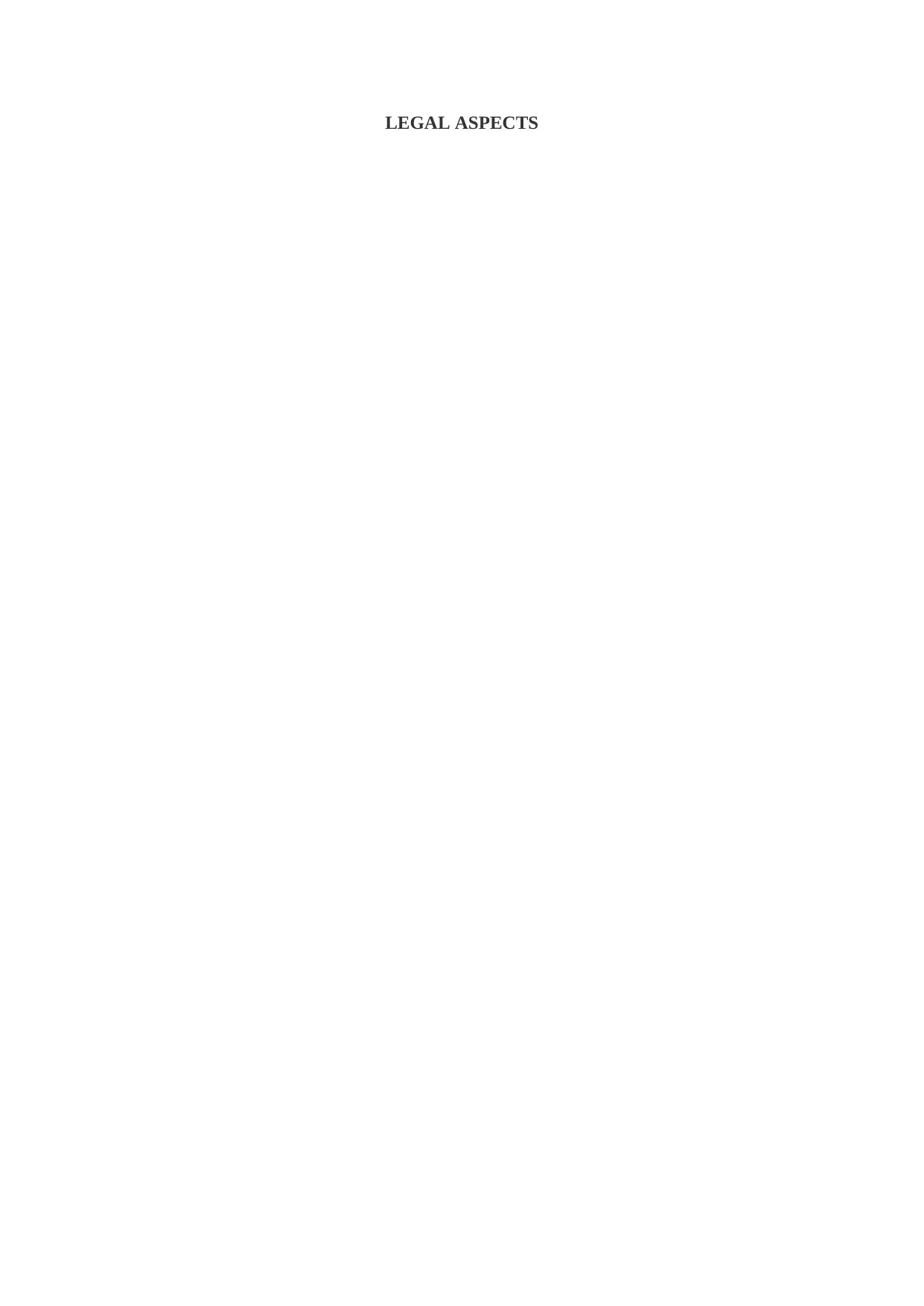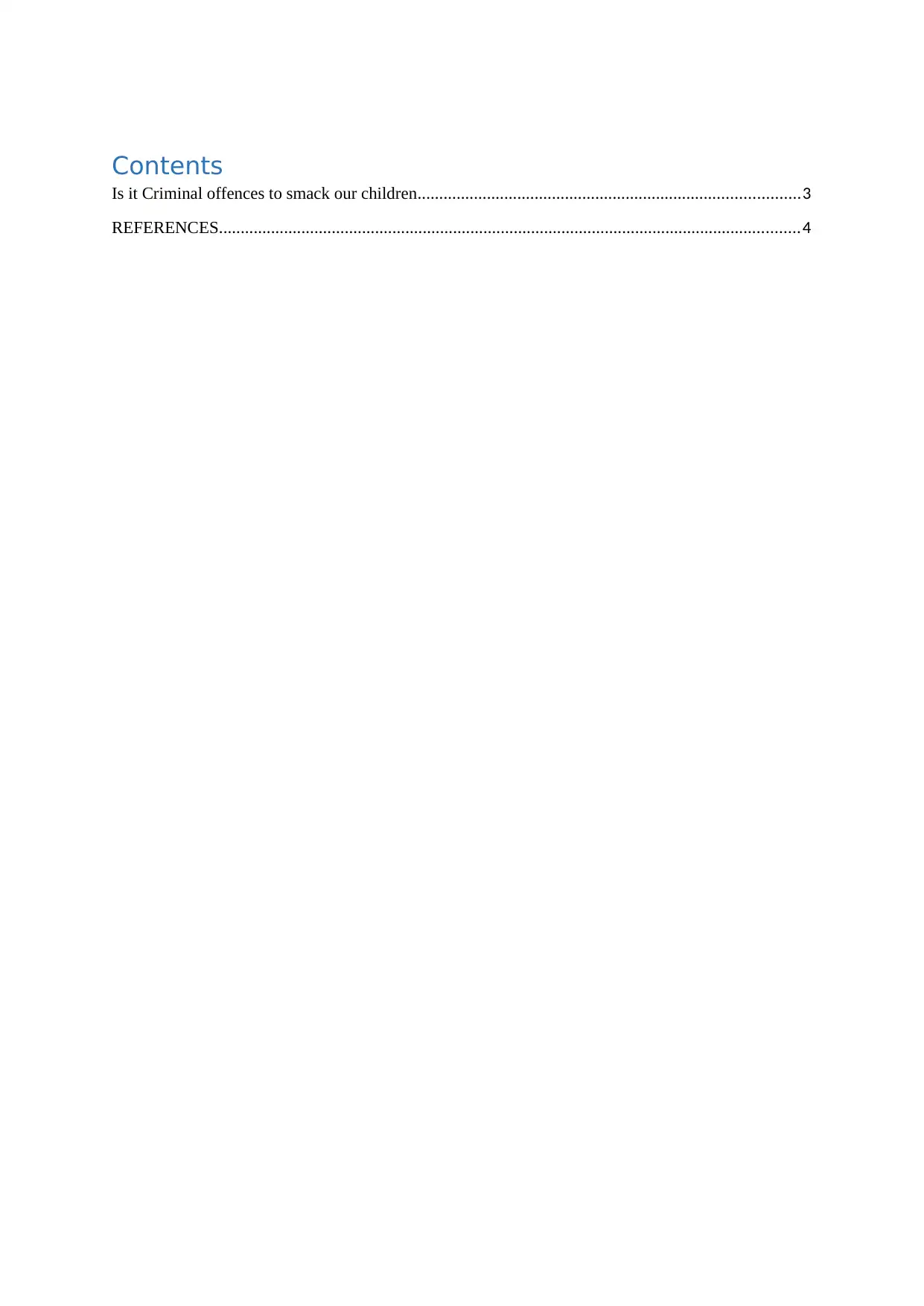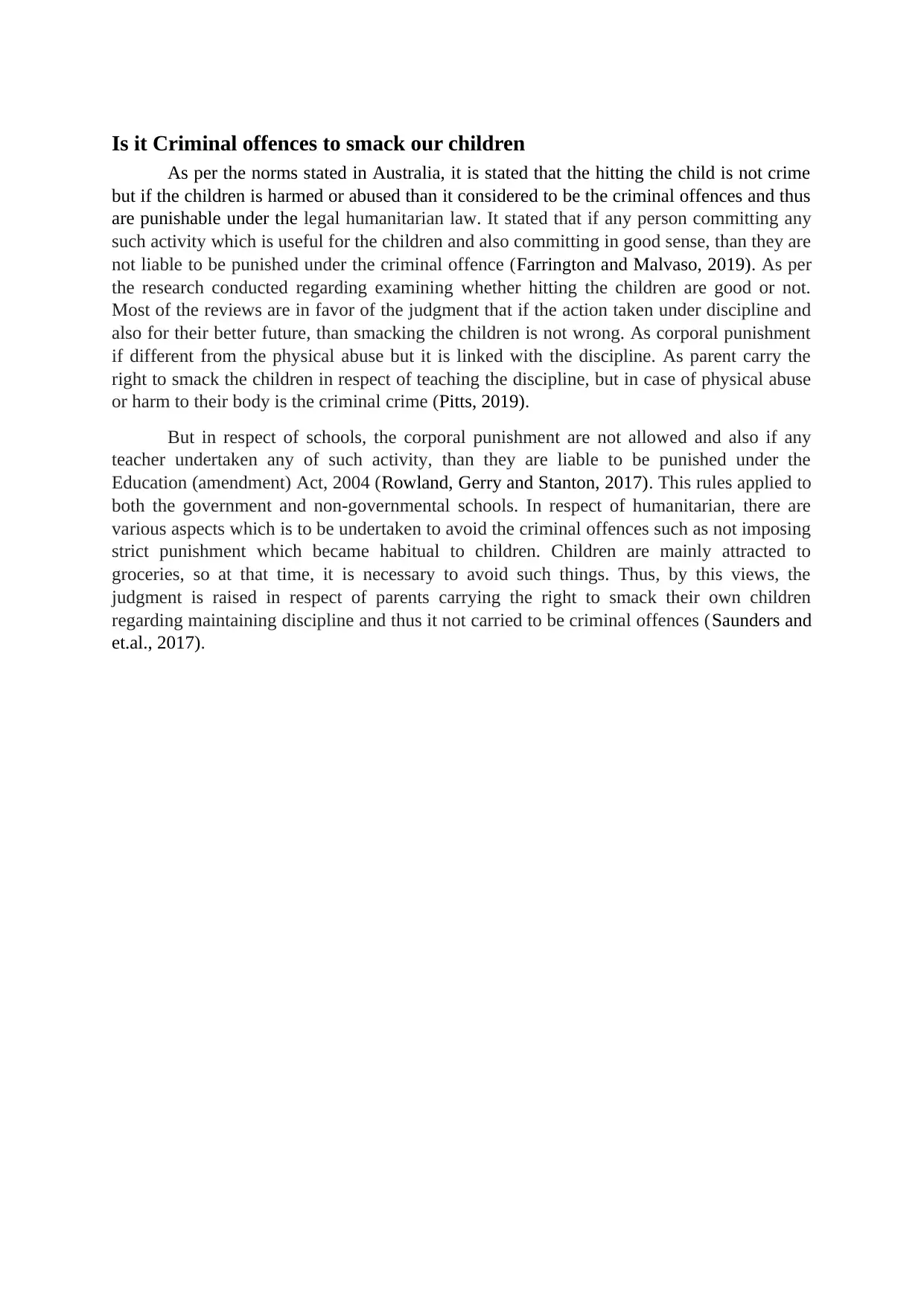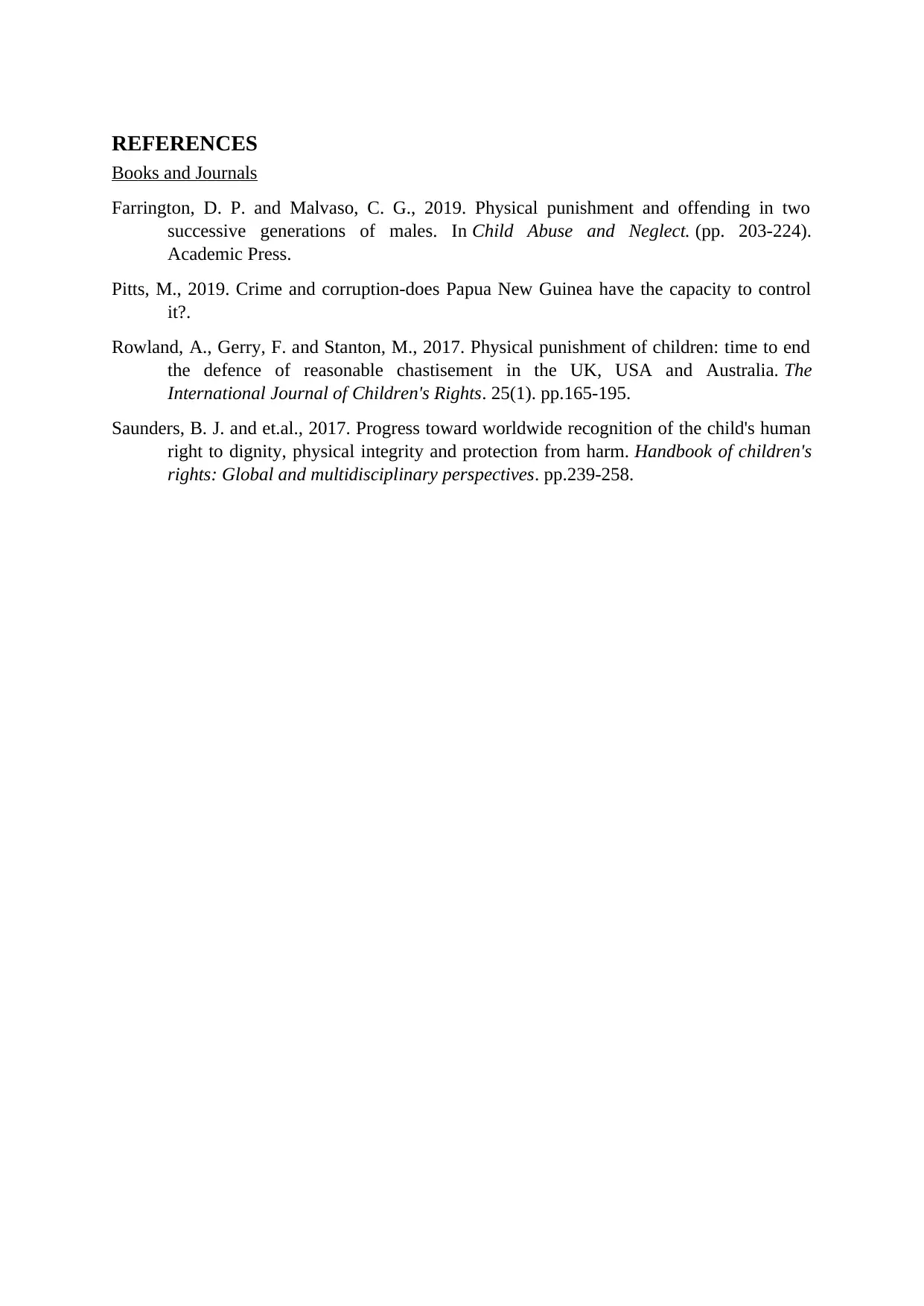Smacking Children: Criminal Offences and Legal Perspectives in AU Law
VerifiedAdded on 2023/01/11
|4
|520
|89
AI Summary
This assignment provides a legal analysis of smacking children in Australia, examining whether it constitutes a criminal offense. It discusses how Australian law differentiates between acceptable discipline and physical abuse, noting that while reasonable discipline by parents is generally permitted, actions causing harm are considered criminal offenses. The analysis also covers the legal restrictions on corporal punishment in schools under the Education (amendment) Act, 2004. It emphasizes the importance of avoiding strict punishments that could become habitual and highlights the need for parents to exercise caution to avoid crossing the line into criminal behavior. The document references several books and journals to support its arguments, offering a comprehensive overview of the legal and humanitarian considerations surrounding child discipline in Australia. Desklib provides access to this and other solved assignments for students.
1 out of 4






![[object Object]](/_next/static/media/star-bottom.7253800d.svg)